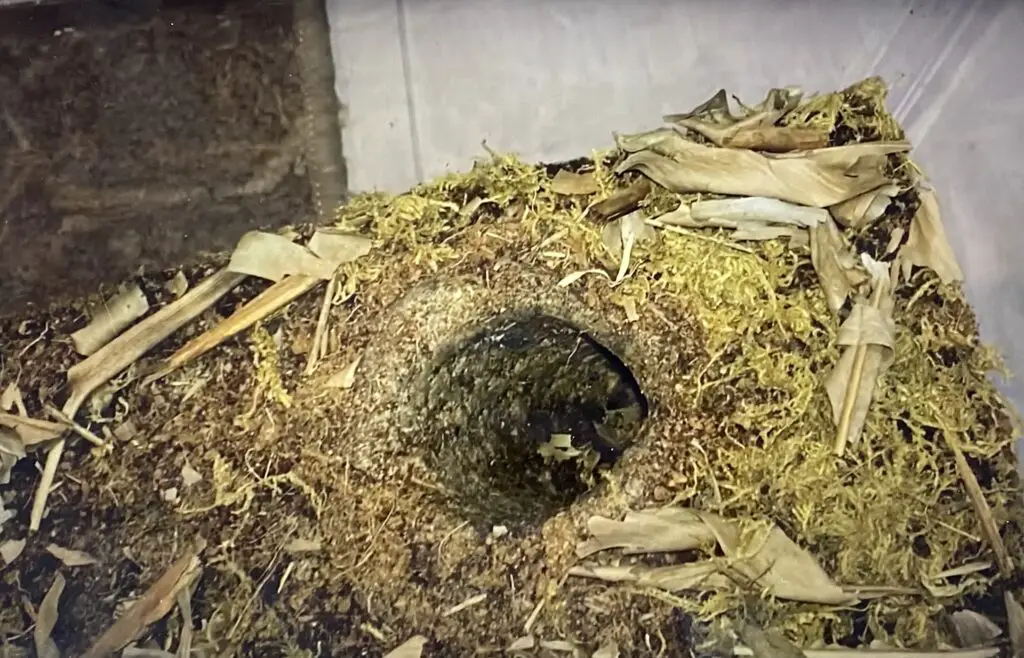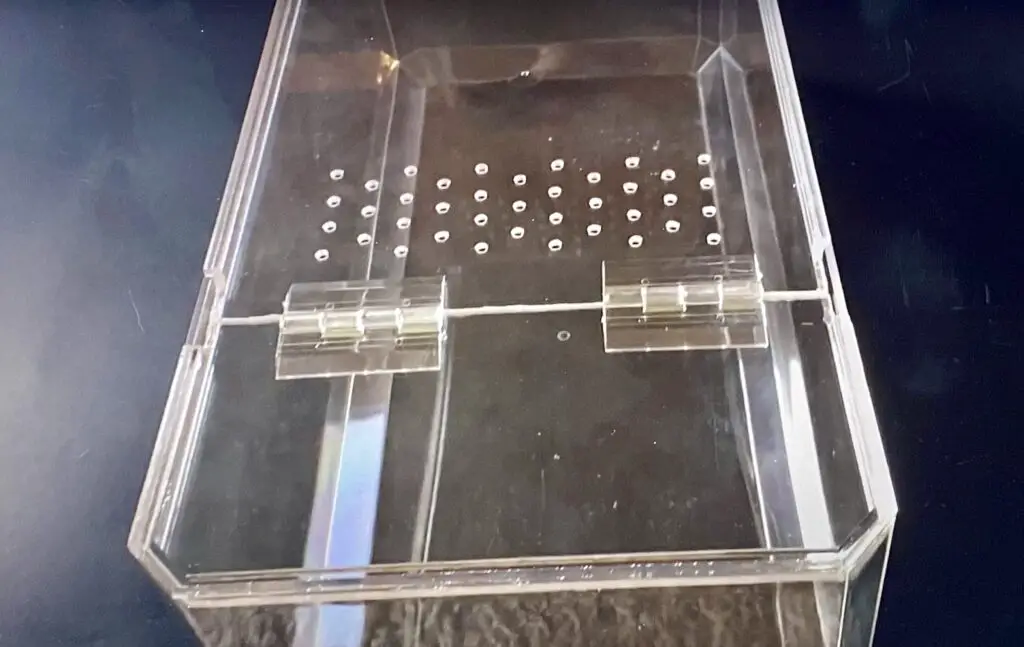How to Choose and Set Up the Right Tarantula Enclosure
Tarantulas require the correct habitat to thrive, so setting up an enclosure to meet your pet arachnid’s requirements is essential. Researching the needs of your chosen species will prepare you for what type of tarantula enclosure should be bought, what conditions should be met, and more. This will ensure your pet tarantula is comfortable and safe in its home.
Although setting up an enclosure for a pet tarantula can be costly, it is worth the effort. A proper enclosure with the right humidity and temperature will allow the tarantula to behave and move as if it were living in the wild, making observing the arachnid more entertaining.
By considering the type of tarantula you own, you can create the perfect tarantula enclosure.
Tarantula Enclosure Types
Different types of tarantulas – arboreal, burrowing, and terrestrial – require different enclosures. Understanding the type of tank your chosen pet tarantula needs is the first step to building a suitable home for the arachnid.
Arboreal
As arboreal tarantulas prefer to be up off the ground, they require enclosures with more height than length or width. Taller enclosures allow tarantulas to climb and create nests at the top, which is what tarantulas would do in the wild.
Burrowing
A burrowing tarantula creates a cavern in the substrate, which requires a deeper enclosure. The same enclosure for tree-dwelling species can be used for burrows, as this allows for a thicker layer of substrate. Surface area is not as vital to burrowing species as these arachnids will rarely move far from their homes; males roam during mating season, but this is impossible in captivity.

Terrestrial
For terrestrial species, height is not the most important factor when selecting an enclosure. In fact, most ground-dwelling tarantulas would suit a tank just six inches tall. However, surface area is essential for this type of tarantula. A good rule to follow is to keep terrestrial tarantulas in enclosures that are at least two to three times wider than the tarantula’s leg span. This means a growing tarantula will need to be rehoused at least once during its lifetime.
Tarantula Enclosure Decor
Certain criteria must be met when selecting decorations for a tarantula tank. Decorating can also be a lot of fun for owners, as it allows them to personalize the enclosure. If you would like to build a themed tank or accomplish a more natural look, then this is the opportunity to do so.
Cork Bark
Arboreal tarantulas require structures to climb, and cork bark provides a good texture for them to crawl up. This type of bark is also resistant to moisture and mold, which will put tarantula keepers’ minds at ease regarding cleanliness.
Other items can be climbed by tarantulas, but cork bark is a favorite of owners and arachnids alike.
Hides
Tarantulas are nocturnal, so they must be provided with sheltered hides that allow them to stay out of the light during the day. They also require security, and a hide can provide just that. As these arachnids are very sensitive to vibrations, hides give them a retreat when a feeder insect is loose in the tank, there’s a tap on the enclosure’s wall, or something similar.
Even burrowing species benefit from hides, as they can create a burrow from inside the hide. This mimics the behavior burrowers would have in the wild, where they would burrow beneath a tree trunk or rocks to protect their homes. Something above a burrow gives it more structure, too.
Plants
Live plants can be used in tarantula enclosures. The best plants to use often have lots of leaves, such as:
- Bromeliads
- Epipremnum aureum
- Ivy
- Philodendrons
- Sansevieria
However, plastic plants are often preferred as they do not require constant care and rarely become damaged.
Water Dish
A shallow water dish should be used in burrowing and terrestrial tarantula tanks. This dish should be smaller than the tarantula to avoid drawing; if the water dish is still too big, put small stones in the bottom. The water should be changed every other day.
For arboreal tarantulas, misting the sides of the enclosure should provide adequate hydration.
All tarantula keepers should avoid using commercially sold products, such as Bug Gel, as these can be dangerous to tarantulas.
Substrate
The chosen substrate can influence a tarantula’s happiness and health. There are several different options for the substrate of a tarantula tank, such as coco fiber, topsoil, and peat moss. For many tarantula keepers, it comes down to personal preference as well as the type of tarantula they own.
Tree-dwelling species rarely touch the ground, but burrowing and terrestrial tarantulas require suitable bedding. The substrate must hold the shape of a burrow and provide soft carpet flooring, which will prevent damage and injuries if the tarantula falls. It will also help to prevent heat loss.
Additives, such as vermiculite, perlite, and sphagnum moss, can be mixed into the substrate to hold moisture and increase the humidity within the tank. This must be done sparingly, though, because tarantulas do not like the feel of vermiculite and perlite.
Additional Requirements for a Tarantula Enclosure
As well as the type of enclosure and the decor within it, tarantula owners should be aware of a few other requirements.
Enclosure Opening
Front-opening enclosures are best suited to arboreal tarantula species, as they do not disturb the spider or its webbing. Additionally, top-opening tanks should be used for burrowing and terrestrial tarantulas, as these enclosures will avoid any escapes.
Placement
As previously mentioned, tarantulas are nocturnal, so it is best to place the tarantula cage away from direct sunlight. A shadowy corner or a room with limited lighting will be the best areas for your pet tarantula.
Ventilation
Mold growth can be an issue in tarantula enclosures, but ventilation holes in the enclosure’s top and walls can help prevent bad bacteria and fungi by allowing cross ventilation. These ventilation holes allow airflow inside the tank, which helps to avoid stagnated air and ensures the arachnid has clean air.
Although tarantulas are often larger than the ventilation holes, spiderlings must be housed in appropriate tanks to avoid escapees. Spiderling enclosures will have ventilation holes that are too small for the baby tarantulas to squeeze through; most have 2mm holes at the top and bottom of the tank.

Conditions in the Enclosure
Two main conditions should be maintained within a tarantula tank: temperature and humidity. Although other spiders might require lighting, this is unnecessary for tarantulas. They are nocturnal, so bright lights could force the arachnids into hiding.
Heating
As tarantulas come from warmer climates, providing them with enough heat is vital. The required temperature might differ between species, but most should be kept at approximately 23°C to 28°C.
If you require an additional heat source to achieve these temperatures, a heat mat is preferable. A gap should be kept between the heat mat and the side of the tank, and a thermostat should be used to maintain the temperature and avoid overheating.
Humidity
Tarantulas should be kept in enclosures with a humidity of 50% to 90%. This will depend on the species, though; for example, Chilean Rose tarantulas do best with a humidity of 60%, while Pink Toe tarantulas prefer 80% to 90% humidity.
Misting the sides of the tarantula enclosure is adequate to achieve the best humidity. However, you should avoid spraying the area where your pet tarantula is.
